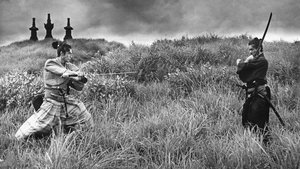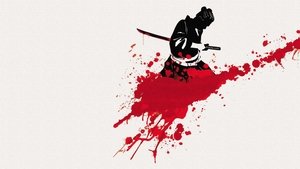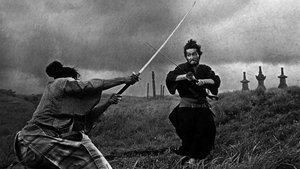Contact: info@alwanfilm.com
Video Sources 0 Views
- Watch trailer
- Harakiri


Synopsis
Table of Contents
ToggleReview: Harakiri 1962 Colorized – A Masterpiece of Japanese Cinema Retold in Vivid Color

Introduction
“Harakiri” (1962) stands as a timeless masterpiece of Japanese cinema, weaving a poignant tale of honor, betrayal, and sacrifice against the backdrop of feudal Japan. In this article, we’ll delve into the significance of this early colored film, exploring its impact on audiences and its enduring legacy in the realm of samurai drama.
Check The Full Colorized Movies List
Check Our Colorized Movies Trailer Channel
Understanding Harakiri 1962 Colorized: Director, Cast, and Genre
Directed by the legendary Masaki Kobayashi, “Harakiri” (1962) showcases his unparalleled skill in crafting visually stunning and emotionally resonant films. The movie features an ensemble cast of talented actors, including Tatsuya Nakadai, whose powerful performance as the ronin Hanshiro Tsugumo anchors the film with gravitas and depth. Blending elements of drama, action, and tragedy, “Harakiri” (1962) transports viewers to a world of honor-bound warriors and simmering political intrigue.
Exploring the World of Harakiri 1962 Colorized: Plot and Characters
At its core, “Harakiri” (1962) tells the story of a masterless samurai who seeks to restore his family’s honor by requesting permission to perform harakiri, or ritual suicide, in the courtyard of a powerful feudal lord. As the truth behind his request is slowly revealed, the film delves into themes of justice, revenge, and the consequences of blind adherence to tradition. Through its richly drawn characters and intricate plot twists, “Harakiri” (1962) offers a thought-provoking exploration of the human condition and the timeless struggle for dignity and self-respect.
The Art of Film Colorization
Film colorization serves as a transformative tool that enhances the visual experience of classic movies, breathing new life into timeless stories and captivating audiences with vibrant hues. By digitally adding color to black and white films, colorization allows viewers to immerse themselves in the rich tapestry of cinematic worlds, exploring every nuance and detail with fresh eyes and renewed appreciation.
Early Colored Films: A Brief History
The history of colored films traces its roots back to the early days of cinema, with filmmakers experimenting with various techniques to add color to their creations. From hand-tinted frames to early Technicolor processes, the evolution of colored film has been marked by innovation and ingenuity, paving the way for the development of modern colorization techniques that continue to captivate audiences to this day.
Harakiri 1962 and Its Early Colored Version
The decision to release “Harakiri” (1962) in a colorized format was met with both excitement and trepidation. While some welcomed the opportunity to experience the film in vibrant color, others expressed concerns about the potential impact on its visual aesthetic. Nevertheless, the early colored version of “Harakiri” (1962) offers viewers a fresh perspective on the timeless tale of honor and sacrifice, enhancing its emotional resonance and captivating audiences with its luminous beauty.
The Debate Over Film Colorization
The debate over film colorization continues to divide audiences and critics alike, with proponents praising its ability to breathe new life into classic movies and introduce them to a new generation of viewers, while detractors argue that it compromises the artistic integrity of the original work and diminishes its historical significance. As the debate rages on, filmmakers and audiences alike are left to ponder the merits and drawbacks of colorization in the ever-evolving landscape of cinema.
Examining Harakiri 1962 as an Early Colored Film
As with any colorized classic, the impact of colorization on “Harakiri” (1962) is a matter of personal interpretation. Some may argue that it enhances the film’s visual appeal and immerses viewers in its world, while others may feel that it detracts from the stark beauty of the original black and white version. Regardless of one’s stance on the issue, there’s no denying the enduring power of “Harakiri” (1962) as a timeless masterpiece that continues to captivate audiences with its gripping storytelling and profound themes.
Influence and Legacy: Harakiri 1962 Colorized’s Impact on Cinema
“Harakiri” (1962) has left an indelible mark on the world of cinema, inspiring countless filmmakers and captivating audiences with its timeless tale of honor and sacrifice. From its unforgettable performances to its sweeping cinematography, the film continues to resonate with viewers of all ages, reaffirming its status as a beloved classic of the samurai drama genre.
Director’s Cinematic Legacy: Beyond Harakiri 1962 Colorized
Masaki Kobayashi’s influence extends far beyond “Harakiri” (1962), with a diverse body of work that continues to captivate audiences around the globe. From “The Human Condition” to “Kwaidan,” Kobayashi’s films are celebrated for their artistry, depth, and social commentary, solidifying his legacy as one of the preeminent directors of Japanese cinema. Through his groundbreaking work, Kobayashi has left an indelible imprint on the world of cinema, inspiring generations of filmmakers to follow in his footsteps.
Themes Explored in Harakiri 1962 Colorized
“Harakiri” (1962) explores a myriad of themes, from the nature of honor and duty to the consequences of blind adherence to tradition. Through its richly drawn characters and thought-provoking storytelling, the film invites viewers to ponder the complexities of the human condition and the timeless struggle for dignity and self-respect. As audiences immerse themselves in the world of “Harakiri” (1962), they are reminded of the universal truths that bind us together and the enduring power of sacrifice to transcend even the most daunting of challenges.
Reception and Controversy Surrounding Harakiri 1962 Colorized
Upon its release, “Harakiri” (1962) received widespread critical acclaim, with many praising its powerful performances, breathtaking visuals, and profound themes. However, the decision to release the film in a colorized format sparked debate among purists, reigniting the age-old discussion surrounding film preservation and artistic integrity. Despite the controversy, “Harakiri” (1962) remains a beloved classic that continues to resonate with audiences of all ages, reaffirming its status as a timeless masterpiece of the samurai drama genre.
Where to Watch Harakiri 1962 Colorized Online
For those eager to experience the timeless beauty of “Harakiri” (1962), the film is readily available on popular streaming platforms such as Criterion Channel, Amazon Prime, and Hulu. Whether you choose to watch it in its original black and white format or the early colored version, “Harakiri” (1962) promises to transport you to a world of honor and sacrifice, where the spirit of the samurai lives on in every frame.
FAQs About Harakiri 1962 Colorized
Q: Is “Harakiri” (1962) based on a true story? A: No, “Harakiri” (1962) is a fictional tale set in feudal Japan, crafted by screenwriter Shinobu Hashimoto and director Masaki Kobayashi.
Q: Who are the main actors in “Harakiri” (1962)? A: “Harakiri” (1962) features Tatsuya Nakadai in the leading role of Hanshiro Tsugumo, supported by a talented ensemble cast that includes Rentarō Mikuni, Shima Iwashita, and Akira Ishihama.
Q: What awards did “Harakiri” (1962) win? A: “Harakiri” (1962) received critical acclaim upon its release, earning numerous awards and nominations, including the Special Jury Prize at the 1963 Cannes Film Festival and the Blue Ribbon Award for Best Film.
Q: Why was “Harakiri” (1962) released in a colorized format? A: The decision to release “Harakiri” (1962) in color was made to introduce the film to a new generation of viewers and enhance its visual appeal for modern audiences. While the choice to colorize the film sparked debate among purists, it ultimately allowed “Harakiri” (1962) to reach a wider audience and ensure its continued relevance in the annals of cinematic history.
Conclusion
“Harakiri” (1962) stands as a testament to the enduring power of cinema to transport us to another time and place, inviting us to explore the depths of human experience and imagination. Whether viewed in its original black and white format or the early colored version, the film continues to captivate audiences with its gripping storytelling, powerful performances, and profound themes. As we reflect on the timeless beauty of “Harakiri” (1962), let us celebrate its status as a beloved classic that continues to inspire, entertain, and provoke thought, reminding us of the universal truths that bind us together as human beings.














